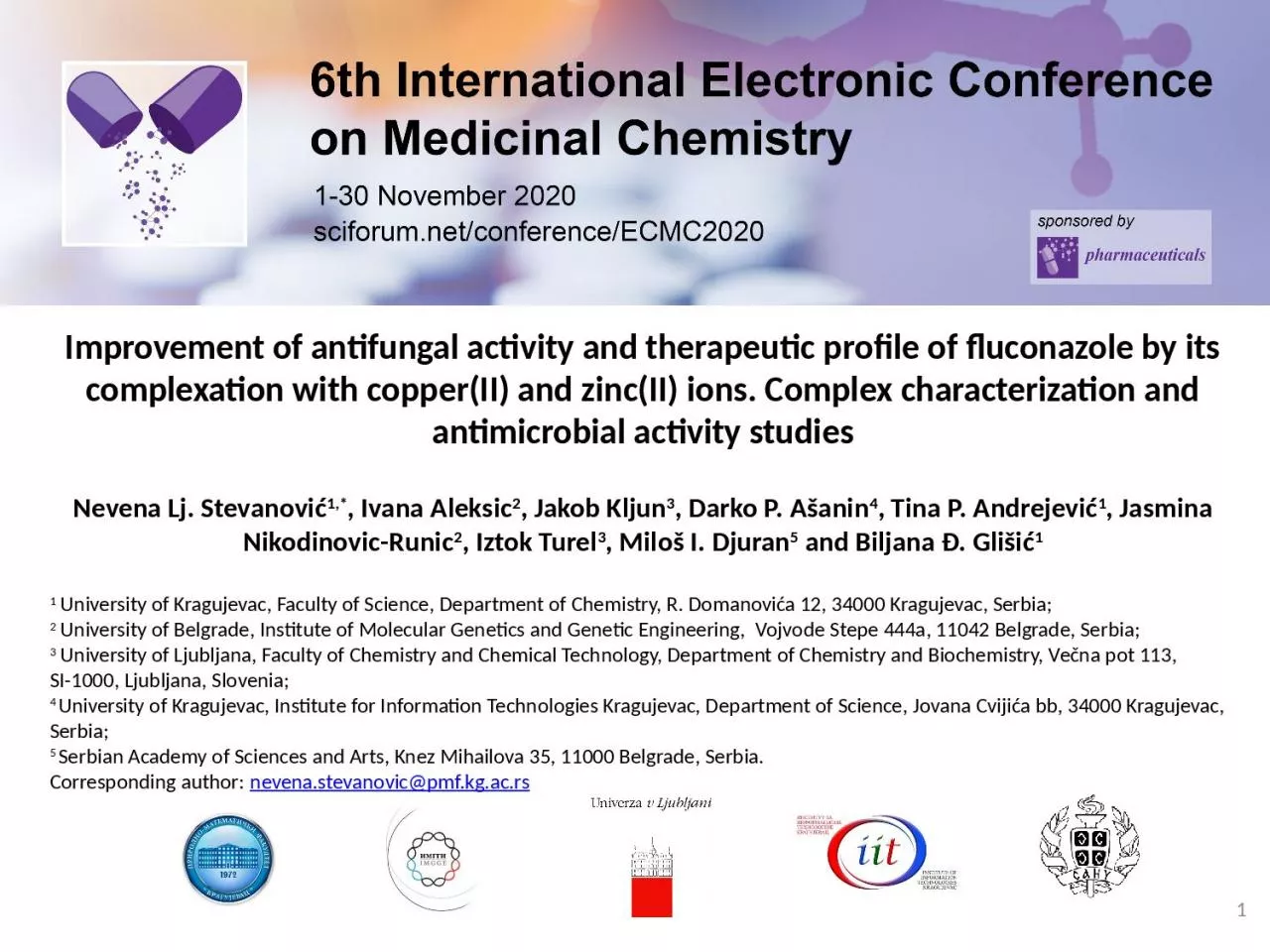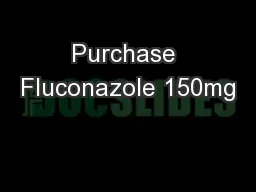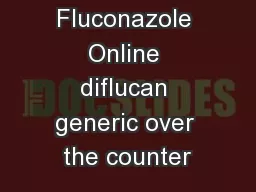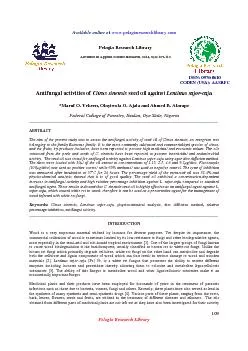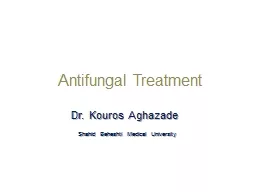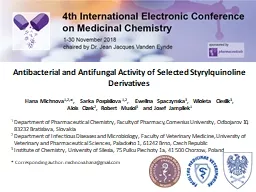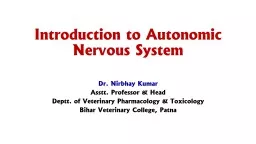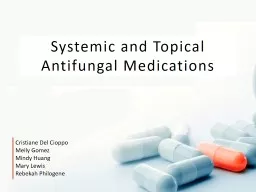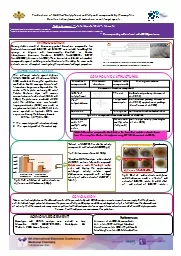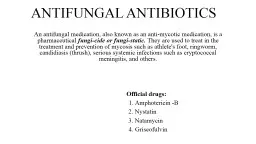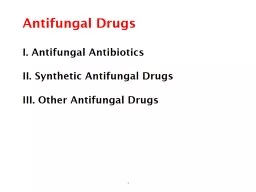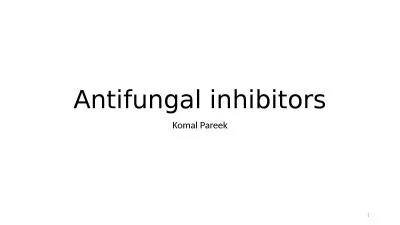PPT-Improvement of antifungal activity and therapeutic profile of fluconazole by its complexation
Author : SmoochieBoochie | Published Date : 2022-08-04
Nevena Lj Stevanović 1 Ivana Aleksic 2 Jakob Kljun 3 Darko P Ašanin 4 Tina P Andrejević 1 Jasmina NikodinovicRunic 2 Iztok Turel 3 Miloš I Djuran 5
Presentation Embed Code
Download Presentation
Download Presentation The PPT/PDF document "Improvement of antifungal activity and t..." is the property of its rightful owner. Permission is granted to download and print the materials on this website for personal, non-commercial use only, and to display it on your personal computer provided you do not modify the materials and that you retain all copyright notices contained in the materials. By downloading content from our website, you accept the terms of this agreement.
Improvement of antifungal activity and therapeutic profile of fluconazole by its complexation: Transcript
Download Rules Of Document
"Improvement of antifungal activity and therapeutic profile of fluconazole by its complexation"The content belongs to its owner. You may download and print it for personal use, without modification, and keep all copyright notices. By downloading, you agree to these terms.
Related Documents

